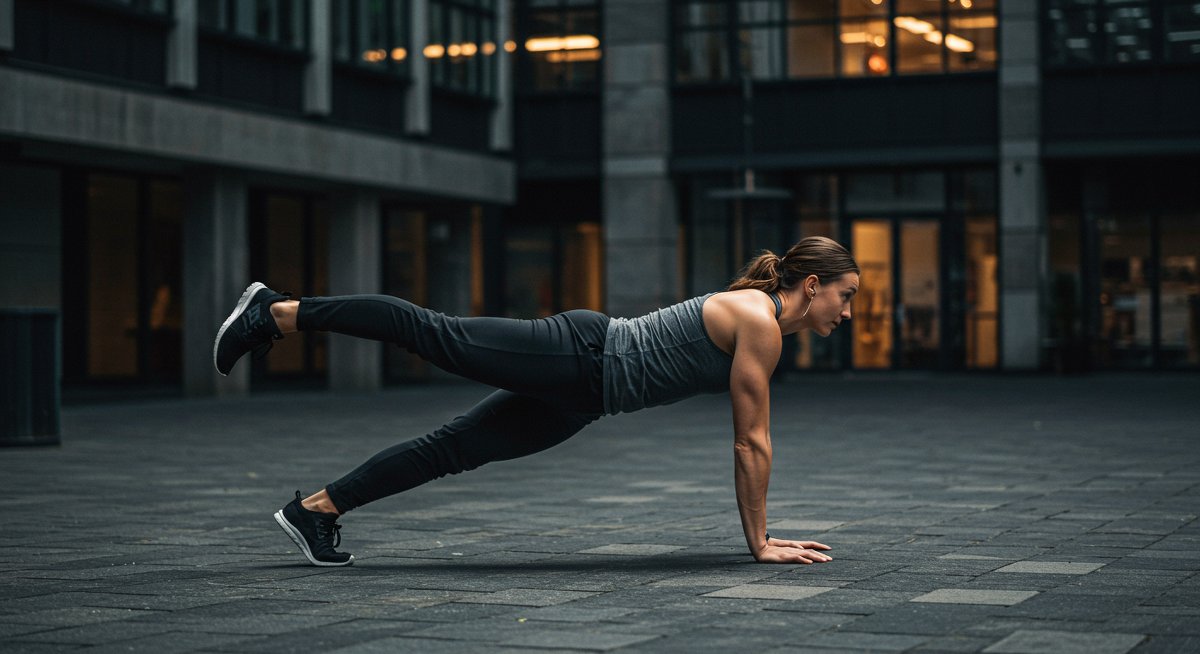That One Reddit Post About Flares...
So, I was browsing r/bodyweightfitness the other day, and a post caught my eye. Someone was asking why flares – you know, those круто looking кружится things gymnasts do – aren't more popular in the bodyweight fitness world. It's a fair question, right? You see people grinding away at planches, full ROM handstand push-ups, all these incredibly difficult static skills. But flares? Not so much. The original poster mentioned they could barely find any mention of flares in the subreddit's history. This got me thinking: why is that? What makes flares the forgotten child of bodyweight training? Is it the dynamic nature of the movement? The perceived difficulty? Or something else entirely?

The Impressive Factor: Strength, Mobility, and Coordination
Here's the thing: flares are seriously impressive. They demand a crazy combination of strength, mobility, and coordination. You need the upper body strength to support your weight, the core strength to control the movement, and the hip mobility to actually execute the кружится motion. Think about it – you're essentially doing a кружится handstand push-up while maintaining your balance and not face-planting. That takes serious dedication. People spend years working towards skills like the planche, which is undoubtedly impressive. But flares seem just as challenging, if not more so, in some ways. Maybe it’s the fact that it's not a static skill, which makes it harder to appreciate in a single screenshot or video. You need to see it in motion to truly grasp the difficulty.
Okay, So What Does This Mean for You?
Let's say you're someone who's already into bodyweight fitness. You've got your pull-ups down, you're working on your dips, maybe you're even dabbling in handstands. Should you suddenly drop everything and start training flares? Probably not. But hear me out. Consider adding flares to your routine as a way to challenge yourself and develop a different kind of strength and coordination. It can be a refreshing change of pace from the usual static holds and linear movements. Plus, let's be honest, they look pretty cool. Think of it as a way to spice up your training and work towards something that not everyone else is doing. It's a chance to stand out and push your boundaries in a unique way.
The Truth Nobody Likes to Talk About: It's Freaking Hard
Alright, let's be real. Flares are HARD. Like, seriously hard. It's not something you're going to pick up overnight. It requires consistent practice, dedication, and a willingness to look a little silly while you're learning. You're going to fall, you're going to struggle, and you're going to question your life choices. There will be days where you feel like you're not making any progress at all. And that's okay. That's part of the process. The bodyweight fitness world often focuses on the highlight reel – the perfect planches, the flawless handstand push-ups. But it's important to remember that behind every impressive skill, there are countless hours of hard work, failures, and frustrations. Don't get discouraged if you don't get it right away. Just keep practicing, keep learning, and keep pushing yourself.
Making Flares Work for Your Life: Adaptations and Progressions
So, you're intrigued by flares, but you're not sure where to start. The good news is that there are plenty of progressions you can use to build up the necessary strength, mobility, and coordination. Start with basic кружится movements on the floor to get a feel for the motion. Then, progress to assisted кружится on parallettes or rings. As you get stronger, gradually reduce the assistance until you can perform кружится flares on your own. Remember to focus on proper form and control throughout the movement. It's better to do a few clean, controlled flares than to crank out a bunch of sloppy ones. And don't be afraid to modify the exercise to suit your individual needs and abilities. If you have limited hip mobility, for example, you can focus on improving that aspect of your fitness before attempting full flares. There's no one-size-fits-all approach to bodyweight training. Find what works for you and stick with it.

Putting This Into Practice: A Step-by-Step Guide
Okay, let's break this down into actionable steps:
- Warm-up: Start with a dynamic warm-up to prepare your body for кружится movement. Include кружится stretches, arm circles, and wrist rotations.
- Floor кружится: Practice кружится кружится on the floor to get a feel for the motion. Focus on maintaining a straight line from your head to your heels.
- Assisted кружится: Use parallettes or rings to assist your кружится. Gradually reduce the amount of assistance as you get stronger.
- Flare practice: Once you can perform assisted кружится with good form, start practicing кружится flares on your own. Focus on control and maintaining a straight line.
- Cool-down: Finish with a static cool-down to improve your mobility and prevent injuries. Hold each stretch for 30 seconds.
Remember to listen to your body and take rest days when needed. Consistency is key to mastering flares.
My Personal Take on All of This
Here's what I think: flares are underrated. They're a challenging and rewarding skill that deserves more attention in the bodyweight fitness world. Maybe they're not as flashy or Instagram-friendly as some other exercises, but they offer a unique combination of strength, mobility, and coordination that you won't find anywhere else. If you're looking for a new challenge, I encourage you to give flares a try. Don't be afraid to step outside of your comfort zone and explore something different. You might just surprise yourself with what you're capable of. And who knows, maybe you'll be the one to popularize flares and bring them into the mainstream. Or maybe not. But either way, you'll have learned something new and pushed yourself to become a stronger, more well-rounded athlete.